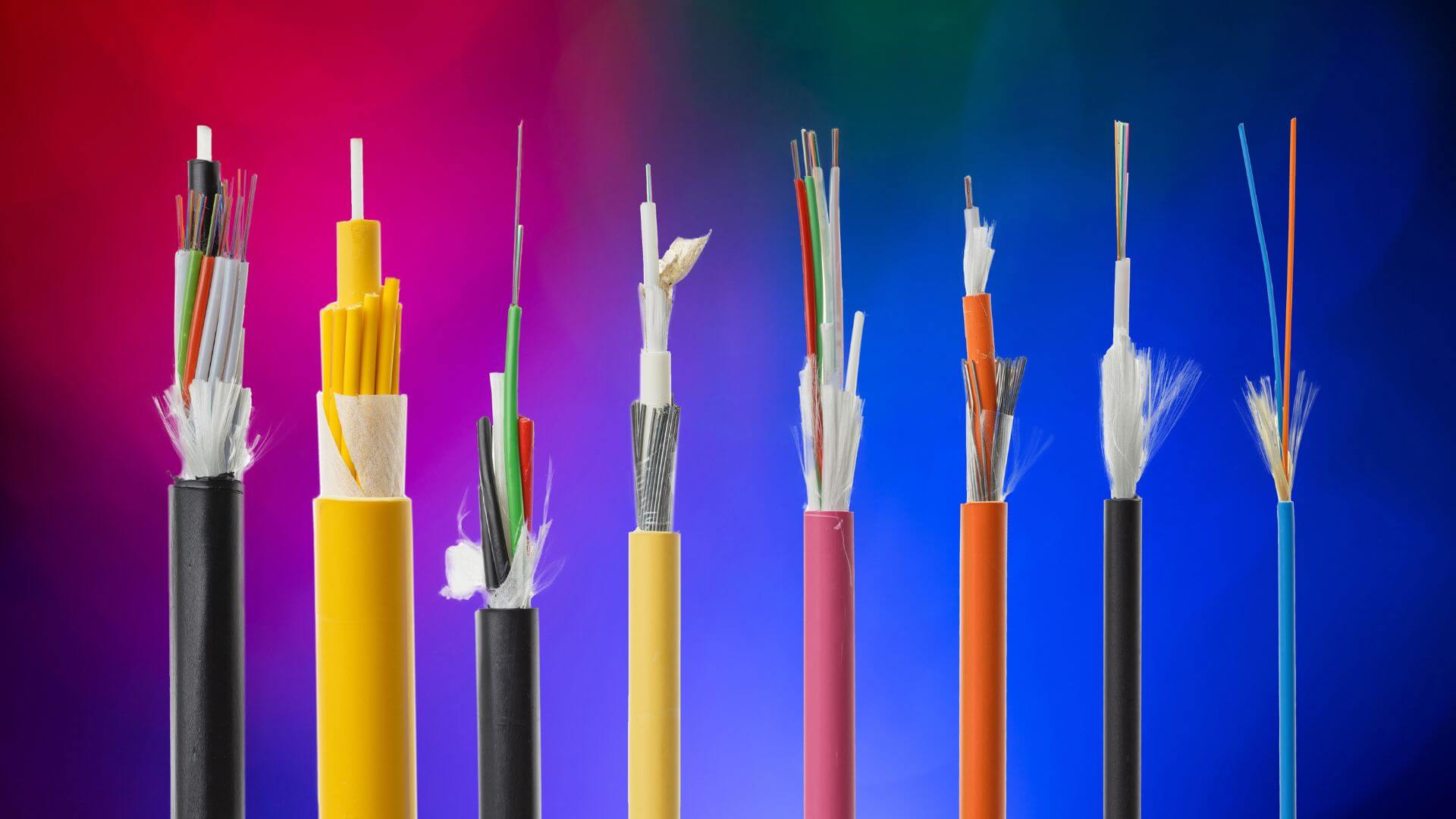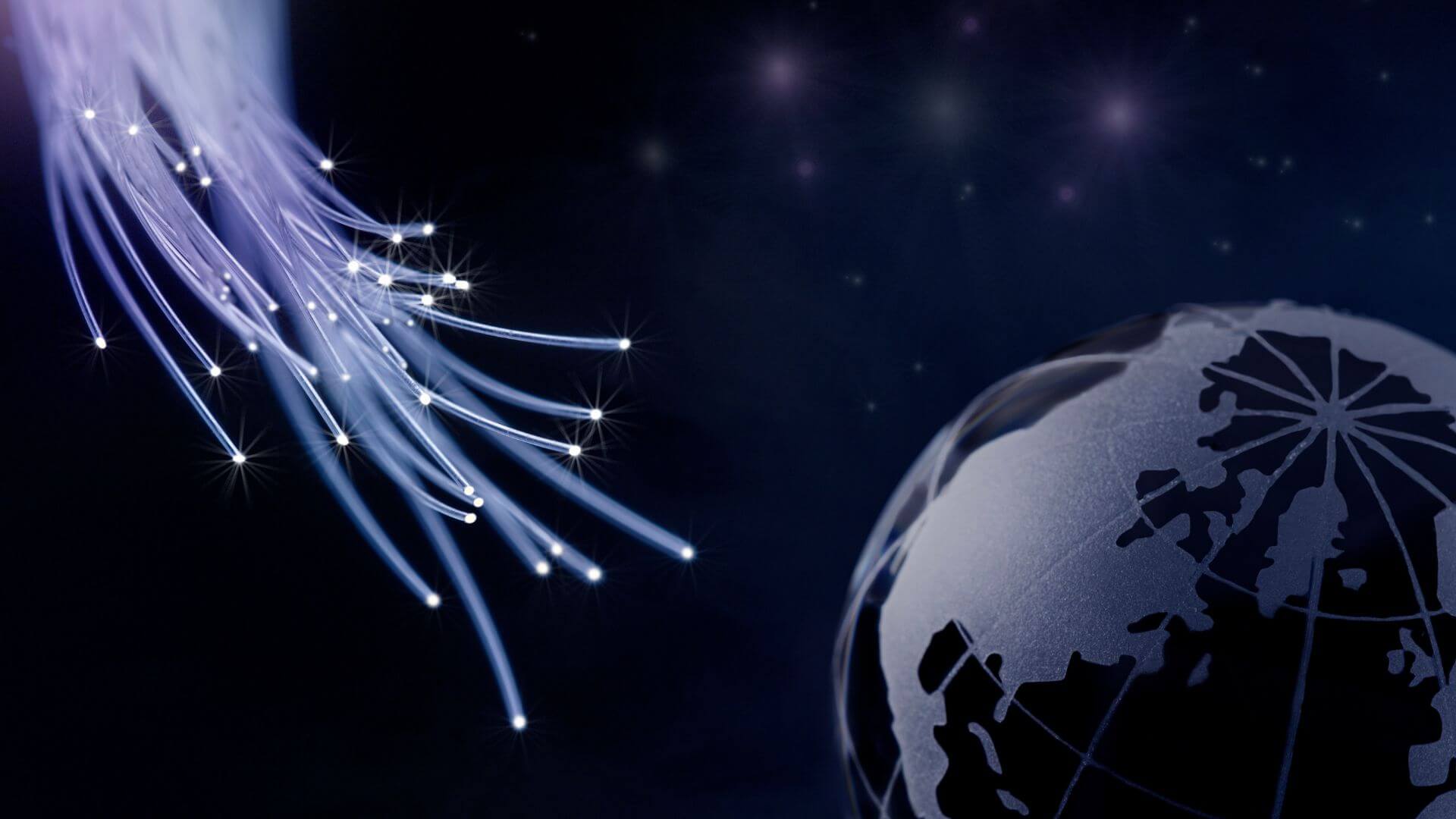Contents
What is fiber optic?
Fiber optic cables are like super-fast highways for data. They’re thin, flexible tubes made of glass or plastic. Inside, they use light, not electricity, to send information over long distances.How They Work
Imagine tiny pulses of light zooming through these cables. These light pulses carry data. The cables are designed to keep this light bouncing inside, guiding it where it needs to go without losing any of the data. When the light reaches its destination, special machines turn it back into the original information, ready for use.
Why They’re Important
Fiber optic cables are super speedy and reliable, making them crucial for modern communication and internet connections.
They’re like secret messengers, ensuring your data travels quickly and safely to where it needs to be.
Exploring Types of Fiber Optic Cables

Single-Mode Fiber Optic Cable
- Designed for long-distance transmission, single-mode cables have a tiny core and use a single light beam to send data.
- They excel in covering vast distances (up to 40 km) and boast high transfer rates, making them great for high-speed, long-range connections.
Multimode Fiber Optic Cable
- Ideal for shorter distances, multimode cables have a larger core and can send multiple light beams to transmit data.
- While their range is limited (around 1100 meters), they offer higher bandwidth, allowing simultaneous data transmission.
Different Categories within Types
- Single-mode cables split into variants like OS1 and OS2, with OS2 offering superior speed and distance capabilities.
- Multimode cables come in categories O1 through O5, where higher numbers (O4 and O5) offer improved speed and distance capacities compared to lower ones (O1 through O3).
Choosing the Right Type
- Picking the suitable fiber optic cable depends on the distance data needs to travel and the required transfer speed.
- Single-mode for longer distances and high-speed transfers, while multimode for shorter distances with high bandwidth needs.
Advantages of Fiber Optic Cables

-
High-Speed Data Transmission: Fiber optics boast lightning-fast data transfer, surpassing traditional cables by significant margins.
-
Reliability: They are highly dependable, less susceptible to interference or signal loss, ensuring consistent performance.
-
Bandwidth: These cables offer extensive bandwidth, allowing multiple data streams simultaneously without compromising speed.
-
Security: Fiber optics are more secure as they don’t emit signals that can be easily tapped into or intercepted.
Disadvantages of Fiber Optic Cables
-
Installation Cost: Initial setup expenses for fiber optics can be higher compared to traditional cables due to specialized equipment and materials.
-
Fragility: These cables can be delicate and prone to damage if mishandled, requiring careful installation and maintenance.
-
Availability: In some regions, fiber optic infrastructure may not be widely accessible or readily available, limiting its adoption.
-
Compatibility: Integrating fiber optics with existing systems might require additional converters or adapters, adding complexity.
While fiber optics offer immense speed and reliability, their installation costs and regional availability remain potential challenges. Yet, their superior performance makes them a preferred choice for modern communication networks.
Prominent Uses of Fiber Optic Cables
-
Telecommunications Networks: Backbone of global communication networks, facilitating high-speed data transfer for internet, telephone, and television services.
-
Internet Connectivity: Provides ultra-fast broadband internet connections for homes, offices, and data centers, ensuring swift and reliable access to online services.
-
Cable Television (CATV): Transmits high-definition video and audio signals for cable TV, enabling seamless streaming and high-quality entertainment.
-
Medical Applications: Used in medical imaging devices like endoscopes and surgical equipment due to their ability to transmit high-resolution images and data accurately.
-
Military and Aerospace: Vital for secure communication and data transmission in military operations and aerospace systems due to their reliability and resistance to electromagnetic interference.
-
Data Centers and Cloud Computing: Forms the backbone of data centers, supporting cloud computing infrastructure by efficiently transferring vast amounts of data.
-
Industrial and Utilities: Utilized in industrial automation, oil and gas exploration, and utilities for reliable and high-speed data transmission in harsh environments.
Fiber optic cables play a pivotal role across various sectors, enabling rapid and secure data transmission, driving technological advancements and connectivity worldwide.
Distinguishing Fiber Optics from Other Internet Types
-
Transmission Medium: Fiber optics use light signals to transmit data, whereas traditional internet connections, like DSL or cable, rely on electrical signals through copper wires.
-
Speed and Bandwidth: Fiber optics offer significantly higher speeds and greater bandwidth compared to DSL or cable internet, enabling faster downloads, uploads, and smoother streaming.
-
Reliability: Fiber optics are less prone to signal interference or degradation over long distances, ensuring more reliable and consistent performance than traditional connections.
-
Distance and Latency: Fiber optics maintain data speed and integrity over longer distances without signal loss, reducing latency (delay) compared to other types of internet connections.
-
Security: Fiber optics are more secure as they don’t emit electromagnetic signals, making them harder to intercept or tap into compared to traditional cables susceptible to signal leakage.
-
Installation and Cost: Installing fiber optic infrastructure can be more costly initially due to specialized equipment and materials, but it offers long-term benefits in speed and reliability.
While DSL, cable, and other traditional internet connections have their advantages, fiber optics excel in speed, reliability, and security, making them the preferred choice for high-performance internet requirements.
